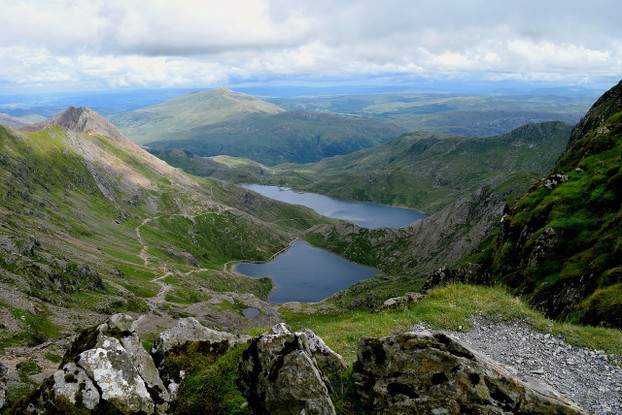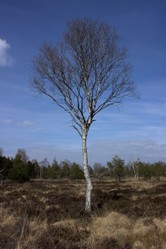There is much marginal land in the British Isles, much of it in the North and West. This land differs from the rolling green fields of the South and East, which has tended to give England its image. These lands consists of hill and mountain country, moorland and island and are officially accounted as Disadvantaged and Severely Disadvantaged Areas, where cultivation is very difficult. These areas werestudied by Dr Dorian Speakman, who established the Marginal Lands Project, which provides a database of solutions for those cultivating marginal land, a project reported in Permaculture, issue 92, Summer 2017.
What makes a piece of land marginal? Take an example.Sarah McBurnie has created a market garden on Unst,Britain's northernmost inhabited island, in the Shetland Isles. She faced the problems of dealing with the harsh winds that scour her exposed isle, which cause crops to be subject to the damaging,often lethal effects of wind chill.Sarah also had to face the problem that the soil of Shetland is in places thin and there is little depth before you hit rock at places, and the bedrock is sandstone, hardly the best for plant nutrients. Yet she wanted fruit and salads, but found that fresh ones were in short supply on her remote isle. The solution! Establish her own market garden. Sarah's technique was to lessen wind chill by using up some of the old fishing nets discarded by the island's fishing industry as a mesh cage to lessen the damaging effects of wind. She also made up her own soil and used raised beds. The result, a thriving market garden, the most northerly in Britain.
Lessening wind can be done with a mesh tunnel, which is not a polytunnel, but is designed to slow down wind velocity. The wind blows through it, but is slowed to up to forty percent of its speed. Shelter belts of trees and bushes can be planted to slow down the winds that come across a site. In Cornwall a richly productive garden has been created on the edge of an estuary using shrubs to shelter the flowers against the salt laden winds, but the shrubs need to be salt tolerant.
Marginal land can also be mountainous and/or boggy. In mountain country there can be valleys with rich soil, but as you ascend the slopes soil becomes thinner and often more acid. Peat soils proliferate, and these are quite acid, even down to pH 5 or less, and little grows well in soils like these. Farmers will often find stretches of bog,particularly in depressions, and in certain parts of Britain, such as Dartmoor and Bodmin Moor, the bogs can be very dangerous and have taken people's lives.
A serious problem, as global warming exacerbates climate change, is flooding, which can be serious in hill country, as the rainwater runs quickly off steep slopes, sweeping soil and rocks with it. This can destroy property and soil, which is washed away, and lives can be at risk, as can businesses. A few years ago at Plas Cadnant gardens, set in a Welsh valley, flood water swept downhill and broke into the gardens, destroying a two hundred year old wall! The owner had spent twenty years restoring the gardens. They were not destroyed, but damaged nevertheless.










 Women of the Gospelson 10/11/2025
Women of the Gospelson 10/11/2025
 Religious Gardenson 08/25/2025
Religious Gardenson 08/25/2025
 Doctor of the Church: John Henry Newmanon 08/03/2025
Doctor of the Church: John Henry Newmanon 08/03/2025
 Restoring the Palm Houseon 07/16/2025
Restoring the Palm Houseon 07/16/2025


Comments
Thank you for your comment below in answer to my previous observation and question.
Unitedstatesian landlords perhaps availabilize themselves of no-limit letting. Income level and source perhaps determine leasing and renting numbers by their tenants.
In a somewhat related direction because of property-related, Unitedstatesians traditionally had to figure as a business, not as private-residence turnovers, their buying and selling four successive homes within a certain time period.
Is such a restriction in effect in the British Isles?
No, there are no limits to the tenanciesbthat landlords can let.
Thank you for your comment below in answer to my previous observation and question.
Shorter-term tenancies intrigue me.
Is a landlord limited in the number of lands to lease or rent to tenants? Is a tenant limited in the number of lands to lease or rent?
The length of tenancy depends on the landlord. I agree that losing multi generation tensnciesbwasba bad thing, but that was Thatcher!
Thank you for your comment below in answer to my previous observation and question.
So two-generation tenancies no longer exist. How sad that is for families who look to such long-term arrangements to maintain what mattered to their land-loving immediate and remoter ancestors!
How long might "short term rentals" be?
Two generational tenancies are gone, now we have short term rentals. Thatcher introduced these and called it progress.
Thank you for your comment below in answer to my previous observation and question.
Your first answer advises us that "Once we used to have three-generation agricultural tenancies for rented farms, so children and grandchildren could take over."
Do two-generation tenancies just involve the owners and their children without any thought for grandchildren?
Estates and some farms stay in families for indefinite amounts of time, but not always.
I think that Chris Dixon is of an old farming family, though how far back it goes I know not. In Sarah's case I am unsure. But the Conservative government, a gang of nasty capitalists, changed the old rules some years ago. Once we used to have three-generation agricultural tenancies for rented farms, so children and grandchildren could take over.Now, while existing tenancies survive, new tenancies are for two years, which means that investment does not occur. The mindless buffoons who miscall themselves the British government have not the IQ to realize the mess that they are making of agriculture and everything else.
FrankBeswick, It's considered an accomplishment for farmland to stay within the same family for four generations in parts of the United States. Is a similar situation true on the other side of the (Atlantic) pond? Are marginal-land farmers such as Sarah McBurnie and Chris Dixon descended from farm families or are they new to their craft?